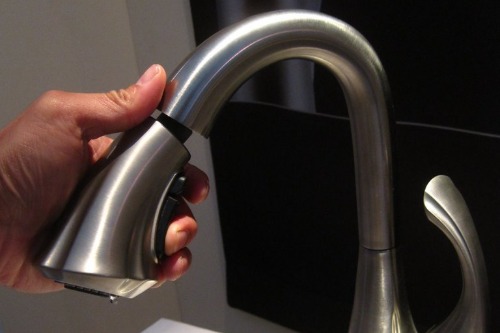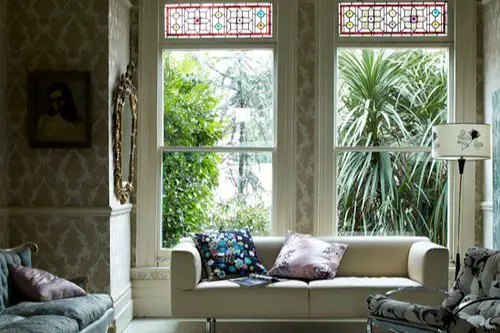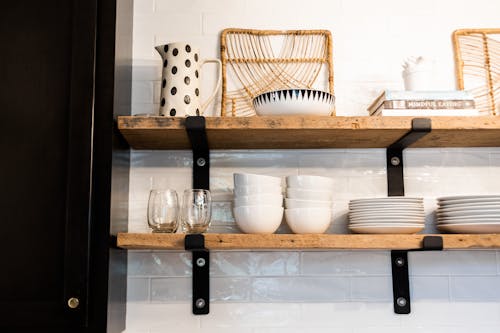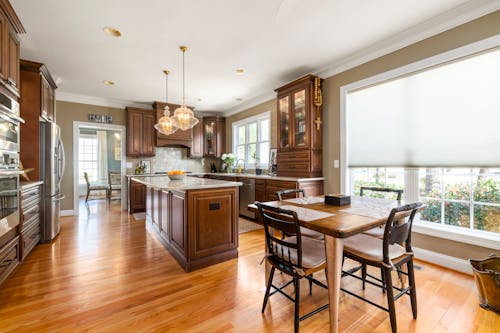1. High-Maintenance Countertops

Marble, soapstone, and concrete countertops are undeniably beautiful—but they’re also porous, stain-prone, and often require regular sealing. That glass of red wine or squeeze of lemon juice? It could leave a permanent mark. These materials are often chosen for their aesthetic, but they demand a level of care that doesn’t suit every lifestyle. If you cook often or have kids, they can become more stress than style.
Quartz or granite alternatives offer similar looks with far less upkeep. They resist stains, scratches, and heat better than their high-maintenance cousins. The best upgrade is one that works with your life, not against it. Beauty shouldn’t come with a side of anxiety.
2. Touchless Faucets

They seem futuristic and convenient—until they start turning on and off at random or refuse to respond when your hands are full of soap. Touchless faucets are great in theory, but in practice, they can be finicky and frustrating. They often require batteries or power sources, and when they malfunction, they’re not easy to fix. What’s meant to save time can end up wasting it.
A high-quality manual faucet with a pull-down sprayer is often more reliable and just as efficient. Sometimes, simple really is smarter. Tech upgrades should make life easier, not more complicated. If you’re constantly waving your hands like a magician, it’s not working.
3. Oversized Kitchen Islands

A massive island might look impressive, but if it disrupts the flow of your kitchen, it’s more of a burden than a bonus. It can make it harder to move between the sink, stove, and fridge—the classic “kitchen triangle.” And if it’s too wide, cleaning the center or reaching across becomes a daily annoyance. Bigger isn’t always better when it comes to functionality.
A well-proportioned island with built-in storage and seating is far more useful. It should enhance your workflow, not hinder it. The best kitchen upgrades are about efficiency, not just square footage. Design with movement in mind.
4. Floor-to-Ceiling Windows Without Proper Treatments

Natural light is amazing—until it turns your living room into a sauna or fades your furniture. Floor-to-ceiling windows are a popular upgrade, but without the right shades or curtains, they can make your home uncomfortable. Glare on screens, lack of privacy, and fluctuating temperatures are all common issues. What starts as a luxury can quickly become a liability.
Invest in layered window treatments like solar shades, blackout curtains, or motorized blinds. They give you control over light and privacy without sacrificing style. A beautiful view is great, but comfort is key. Don’t let your windows work against you.
5. Open Shelving in the Kitchen

It looks great on Instagram—rows of matching dishes, curated mugs, and a few trailing plants. But in real life, open shelving is a magnet for dust, grease, and visual clutter. Unless you’re extremely tidy and love styling shelves weekly, it quickly becomes a maintenance headache. And if you actually use your kitchen, it’s hard to keep those shelves looking photo-ready.
Closed cabinets hide the mess and make cleaning a breeze. Even glass-front doors offer a compromise between style and function. Open shelves can work in moderation, but they’re not always the upgrade they seem. Sometimes, doors are your best friend.
6. Freestanding Bathtubs

They’re elegant, sculptural, and often the centerpiece of a modern bathroom. But freestanding tubs are harder to clean around, take longer to fill, and can be uncomfortable to get in and out of—especially for kids or older adults. They also tend to lack ledges for soap, shampoo, or a glass of wine (if that’s your thing). What looks luxurious can feel impractical fast.
Built-in tubs with tiled surrounds or alcove designs offer more function without sacrificing style. They’re easier to maintain and often more comfortable for daily use. A bathroom should feel like a retreat, not a balancing act. Choose comfort over drama.
7. Smart Everything

Smart thermostats, smart lights, smart locks—when they work, they’re great. But when the Wi-Fi goes down or the app glitches, you’re left in the dark (literally). Overloading your home with tech can create more points of failure and more things to troubleshoot. And not everyone in the household may be equally tech-savvy.
Stick to smart upgrades that genuinely improve your routine and have reliable manual overrides. Sometimes a regular light switch is all you need. Convenience shouldn’t come with a learning curve. Tech should serve you—not the other way around.
8. Open Floor Plans Without Sound Control

Tearing down walls can make a space feel bigger, but it also means sound travels everywhere. Cooking noises, phone calls, and the TV all compete in one echoey space. Without rugs, curtains, or acoustic panels, open layouts can feel loud and chaotic. What’s meant to feel airy can end up feeling overwhelming.
Add soft materials to absorb sound—think textiles, upholstered furniture, and even bookshelves. Define zones with rugs or partial dividers to create a sense of structure. Openness is great, but peace and quiet matter too. A home should sound as good as it looks.
This post 8 Home “Upgrades” That Are Secretly Making Life Harder was first published on Greenhouse Black.
